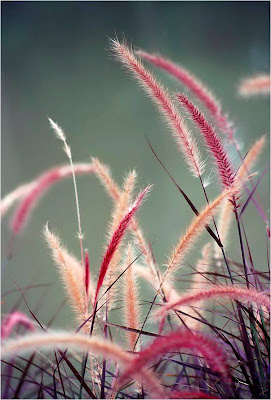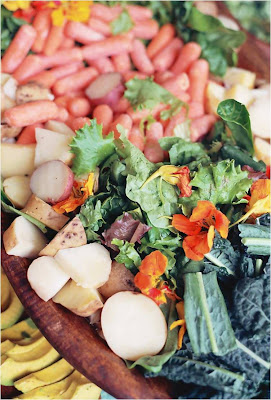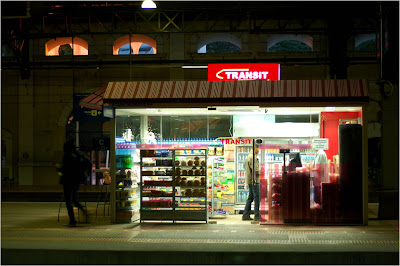Fujifilm re-engineered their classic Velvia (1990-2005) using an up-to-date film base, and re-released it in 2007 as Velvia 50 due to popular demand. Digital could not, and still cannot, come close to approximating Velvia.
Kodak's latest product (besides Portra 400, which is more of a revision and update than a new film stock proper) is Ektar 100, launched in September 2008. The original Ektar was introduced in 1989 with ISO ratings of 25, 125 (later 100) and 1000, and then discontinued in 1994. The new emulsion, while bearing the name of its predecessor, was not designed to be a perfect copy as Velvia 50 was.
Ektar 100 is touted to be, among other things, exceptional for scanning and digitising. It is also claimed to have the highest saturation of any Kodak print film available today, as well as the smoothest and finest grain, making it suitable for enlarging. (More from Kodak here.)
I got my first five rolls from B&H, collecting them from the UPS facility in Honolulu the day before leaving for the Big Island. It was the first film I shot on the Big Island, and to date I have finished some seven or eight rolls.
* * *
Of course, all the promotional fluff is meaningless if the film does not perform well as a film to begin with; there is no point hanging a wonderful enlargement of a lousy photograph. And as far as films are concerned, the main areas of concern are colour reproduction, performance under various lighting conditions and dynamic range.
It was the 69th anniversary of the Pearl Harbor bombing two days ago, and what better way to commemorate the occasion than to show how Ektar performed on the U.S.S. Missouri in Pearl Harbor itself!
Stars and Stripes.
The Captain's Cabin.
View of the U.S.S. Arizona Memorial, Pearl Harbor and Honolulu from atop the U.S.S. Missouri.
Piao, Ben, Nasha, Tawin and Renzo. Photo by the U.S.S. Missouri crew guy.
Site of a kamikaze attack on deck.
The ship's library.
In the shots above, Ektar performs relatively well in daylight; but so do most print films. Instead, I was impressed by the pictures of the Captain's Cabin and the Library. The warm light inside the Captain's Cabin was well-balanced with the cooler early afternoon light on the outside, maintaining white balance in spite of different colour temperatures.
In the Library picture, the red chair cushions, yellow signboard and brown index card cabinet were reproduced with good saturation and colour fidelity in spite of the fluorescent lighting.
* * *
Let's see how Ektar 100 performs under a variety of lighting conditions.
What follows are pairs of photos taken in fluorescent, overcast, shade and sulfur lamp light, respectively.
Maria Ivanova, Woodrow Wilson Center, Washington, D.C.
Lunch, Woodrow Wilson Center, Washington, D.C.
As can be seen, Ektar 100 handles fluorescent, especially warm fluorescent, light very well. Colours are vivid and true-to-life, and the textures are pleasant. In fact, the room looks more pleasant and welcoming than I actually remember it!
Lalang, Pologround at Taman Sultan Azlan Shah, Ipoh.
Joy, Pologround at Taman Sultan Azlan Shah, Ipoh.
Suit Lin, Physics Lab at the abandoned school, Ipoh.
Greens, Pahala Plantations manager's house, Ka'u, Big Island of Hawai'i.
Ektar 100 seems to perform best in shade on warm days, where the light is warm enough to allow the saturated colours to come through without looking unnatural. Suit Lin's turquoise tank top contrasts with the orange doors, and the salad looks tempting!
Family on Hari Raya Eve, Taiping Railway Station.
Adrian, Ruth, Emily Chow and George, Ferry to Penang.
I once thought these atrocities were weaknesses owned only by slide films. Apparently not! Sulphur lamps seem to produce light which is too cool and 'green' for Ektar 100 to manage. Of course, this can be remedied using photo-editing software, but the process is laborious.
* * *
Let's see how Ektar 100 stacks up against Portra 160VC (which I recently blogged, and raved, about) and digital capture.
Ektar 100.
Portra 160VC.
Digital, Nikon D50.
Of the three, Ektar's colours are the least lifelike, while digital is the warmest. However, I like the textures of Portra best. Ektar has once again been trumped by the green sulphur lamps high up on the roof of the station, while digital has taken on a somewhat yellowish tint.
On the other hand, Portra most closely resembles what I saw on the platform, albeit a little less warm.
* * *
Roger and Frances describe Ektar 100 here as follows:
It's incredibly rewarding if you use it properly, and quite close to a disaster if you don't. Think of it as a negative film with the latitude of slide film, and it's rewarding: depending on exposure, you can choose anything from soft, pastel colours (minimum exposure) to rich, saturated colours.
That Ektar 100 behaves as a print film with slide-like qualities does not come as a surprise, as slide films Velvia and Provia are also abysmal performers under sulphur lamps.
It seems the one thing consistent about colour films, especially colour slide films, is that they require careful lighting. They are not as flexible as digital. But when you get the light right, they perform very well. Take Velvia; it has a very narrow dynamic range, extremely high saturation, and won't perform well in any but the finest light.
You see, it's difficult to get conditions right for films like Velvia, but when those conditions are right, no other film, and certainly no digital processor, comes close to matching it.
I've barely shot enough to arrive at the final word on Ektar 100; it seems to be the sort of film that can be suited to a variety of applications if the photographer knows what he/she is doing. And so I shall experiment a little more with it and see if I can get it to surprise me even further.
Langkawi, here we come!

















No comments:
Post a Comment